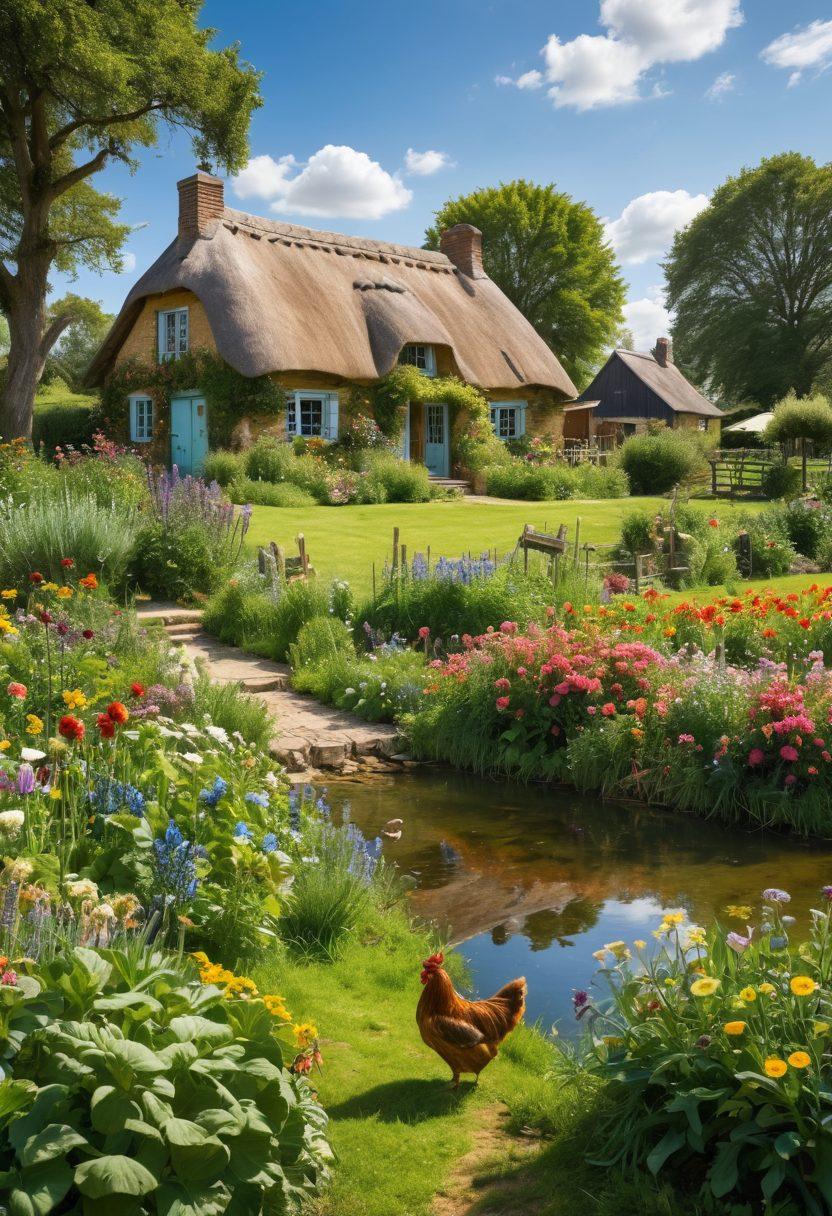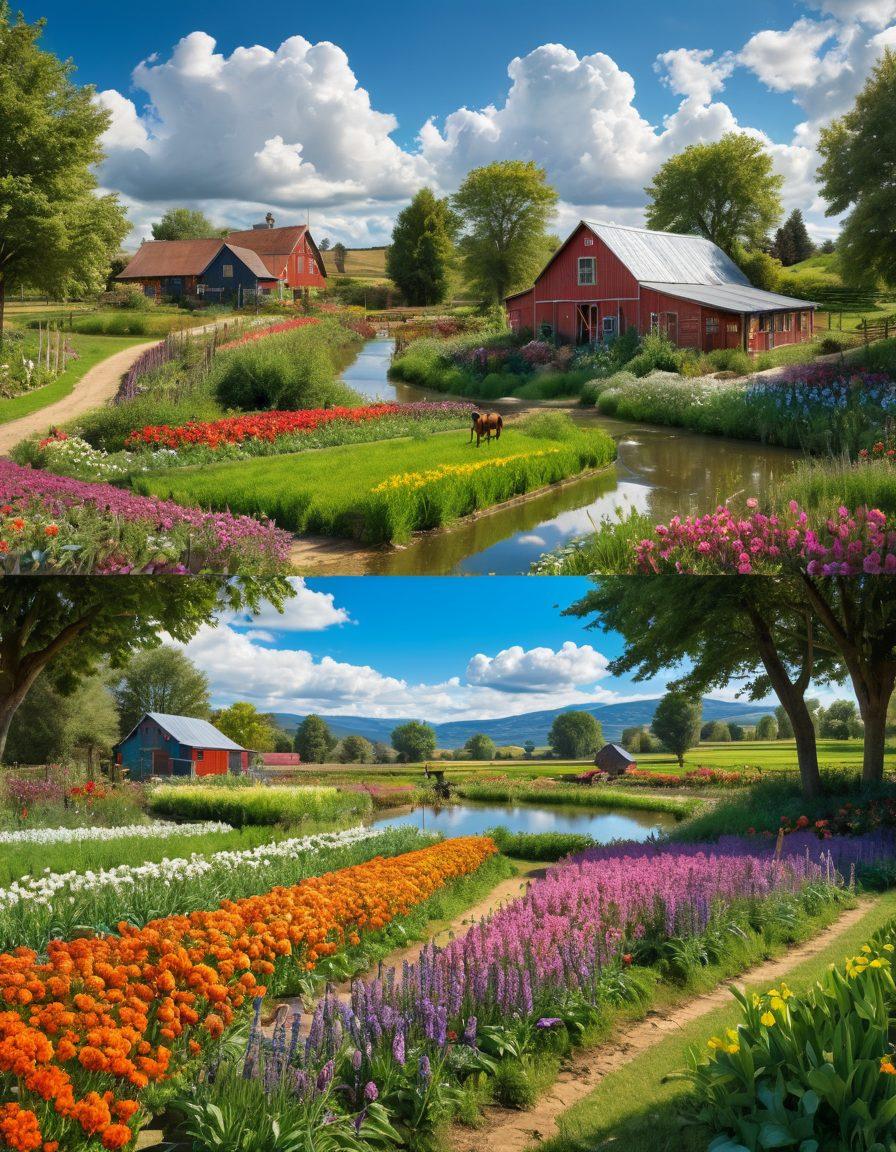Embracing the Countryside: A Guide to Sustainable Farming Practices on the Homestead
In the heart of the countryside, where the gentle breeze carries whispers of serenity, lies the promise of a sustainable future. As more people yearn to connect with nature, the allure of homesteading has never been more compelling. Have you ever dreamed of transforming your fazenda into a thriving hub of sustainable agriculture? Can you imagine the joy of harvesting your own crops or tending to livestock gracefully roaming the pastures of your ranch? This post will unveil key practices for cultivating a sustainable future right on your homestead, ensuring that your journey in agribusiness is as fruitful as it is environmentally conscious.
One of the first steps to establishing a successful homestead is effective farm management, and it begins with understanding your land. Each plot, whether it's a sprawling plantation or a quaint farmstead, has unique characteristics. Take time to learn about your soil types, water availability, and local climate. Implementing practices like crop rotation and cover cropping not only boosts crop yields but also enhances the health of your land. After all, good stewardship of your land paves the way for healthier ecosystems and richer agricultural diversity.
The integration of livestock into your farming practices is another vital aspect of sustainable agriculture. Imagine walking through your homestead's orchards and vineyards, with chickens lazily clucking nearby, providing natural pest control, and enriching the soil with their droppings. Have you ever thought about how raising native breeds of livestock could enrich both your biodiversity and your country life? By adopting a holistic approach to livestock management, including rotational grazing and pasture-based systems, you can bolster your farm’s productivity while respecting the natural balance of rural ecosystems.
As consumers increasingly seek organic food, implementing organic farming practices on your homestead becomes even more critical. This journey starts with understanding the fundamentals of agronomy and embracing eco-farming techniques. Consider starting a compost bin to recycle organic waste, or utilizing integrated pest management (IPM) to minimize the need for chemical pesticides. Remember, sustainable farming is not just a trend; it's a commitment to future generations. What innovative strategies can you incorporate into your farming to make it wholly organic?
Lastly, don’t forget the beauty of landscaping on your farm! Creating a visually pleasing environment can enhance the overall appeal of your homestead. Incorporate native plants into your landscape design to promote biodiversity and attract beneficial insects. Furthermore, engaging your local community through farmer's markets or CSA (Community Supported Agriculture) initiatives can help spread awareness about sustainable farming. How can you inspire others to appreciate the delicate balance of agriculture and nature in their rural living?
From Crop to Livestock: Embracing Eco-Friendly Farming Techniques
Nestled in the heart of the countryside, many dream of that charming farmhouse surrounded by rolling fields and grazing livestock. What if I told you that this idyllic image can become reality while also embracing sustainable farming practices? From crop to livestock, eco-friendly techniques are not just good for the planet but can also create a thriving, self-sufficient homestead. So, what does it really mean to go green on your farm, and how can we turn idealistic dreams into tangible practices right here on our land?
Imagine standing on your ranch, watching your crops sway in the gentle breeze, knowing that every seed you plant contributes to the rotation of sustainable agriculture. This notion can cultivate both peace of mind and a deep connection to the Earth. Whether it’s through organic farming or smart farm management, every farmer holds a piece of the power to transform our rural landscapes. By adopting eco-farming principles, we nurture not only the land but also the next generation of farmers who will inherit it.
Let’s dig deeper into the world of cultivation! What makes organic farming a key player in our agricultural practices today? By rejecting synthetic fertilizers and pesticides, we not only protect the soil’s integrity but also the delicate balance of our ecosystems. Picture a vibrant vineyard or orchard teeming with life. You can create a farmstead that thrives in harmony with nature—so why not take steps today to swap chemicals for compost and synthetic water systems for rainwater harvesting?
Hand-in-hand with crops, livestock plays a crucial role in this pastoral tale. Integrating animals into your farming practices can significantly enhance land productivity. The age-old wisdom of rotational grazing can rejuvenate soil, providing natural fertilizers while keeping your cattle happy. Ask yourself, how can we ensure that our livestock benefits from our practices while minimizing their environmental impact? Perhaps it’s time to explore new categories of eco-friendly husbandry that prioritize animal welfare and sustainable feed production.
As we embrace this journey towards eco-friendly farming techniques, envision how country life can connect us more deeply to food production and sustainability. Each decision we make—from the crops we choose to the way we manage our livestock—affects our environment, our health, and ultimately, our communities. So, take a moment to assess your current practices and consider innovative solutions that not only enhance the beauty of our countryside but also pave the way for a brighter future in agribusiness. After all, every farm can be a testament to the possibility of sustainable living.
Creating a Flourishing Farmstead: Holistic Approaches to Rural Agriculture
Imagine waking up to the soft sound of rustling leaves, fresh air filling your lungs, and a warm cup of coffee in hand, nestled in the heart of your very own homestead. The countryside, with its sprawling fields and vibrant landscapes, offers not just a picturesque view, but a chance to create a flourishing farmstead through sustainable farming practices. But what does it truly mean to embrace rural agriculture? Whether you’re starting a small vineyard, cultivating crops, or managing livestock on your ranch, the foundation of your agribusiness lies in holistic approaches to farming that promote ecological balance. Let’s dive into how we can nurture our land and cultivate a sustainable future for generations to come.
To foster a thriving farm, one must embrace the spirit of stewardship towards the land. This means treating your homestead not just as a means of production but as a living entity deserving care and respect. As agricultural leaders often say, 'A healthy soil yields a healthy harvest.' By engaging in practices such as organic farming and cover cropping, farmers can enrich their soil naturally. As your farmstead transforms, you'll find that the health of your crops and livestock aligns with the vitality of your local ecosystem. Imagine walking through your plantation, where vibrant greens abound, bees buzz around your orchard, and birds sing—the true essence of country life flourishes in harmony.
Have you ever pondered the connection between rural landscapes and biodiversity? In creating a flourishing farmstead, integrating biodiversity is crucial. Implementing agro-ecological practices allows diverse species to thrive, effectively enhancing crop resilience and pest control. Picture a pastoral scene where various plants and livestock coexist; this harmony can lead to improved sustainability and overall farm management. As we nurture interdependence within our ecosystems, we are not merely farming; we are fostering life. That's the beauty of sustainable agriculture—an eco-friendly approach that gives back as much as it takes, ensuring the vibrancy of our countrysides.
As we embark on our quest for sustainable cultivation, let’s not forget our role as the guardians of future generations. Good farmers are not just producers of food; they are also educators and mentors. Engage with local communities, share knowledge about eco-farming practices, and embrace the challenges and victories of fellow agronomists. Together, we can create a culture of sustainable farming that thrives beyond personal farmstead boundaries. In this interconnected world, your little section of land can create ripples of change, inspiring others to embrace eco-friendly farming, turning small hills of thought into mountains of action.
In conclusion, creating a flourishing farmstead signifies more than just harvesting produce from the land. It’s about enlivening the spirit of sustainable agriculture that respects both our environment and our communities. By reconnecting with the natural rhythms of the countryside, we can cultivate not just crops but also a wise stewardship of our resources. So, go ahead—with determination and creativity in your heart, step into the world of sustainable farming. After all, your fazenda is more than a plot of land; it’s a canvas for possibility, a sanctuary for growth, and a cornerstone of the future you wish to build.


